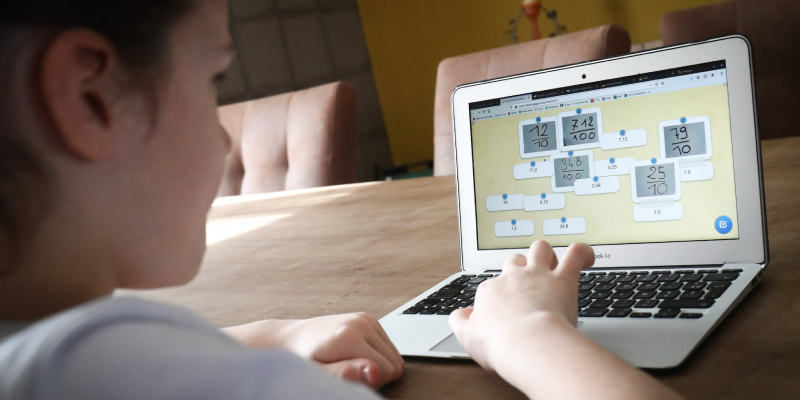How Teachers And Curriculum Will Shape Ed Tech’s Future?

Technology: An Inevitable Aspect Of Modern Classrooms
December 29, 2021
10 Trends Every Industrial Designer Must Keep Up With
January 5, 2022How Teachers And Curriculum Will Shape Ed Tech’s Future?

Edtech: The Future Of Education
Educators worldwide are developing and implementing ground-breaking technology to improve education and the future of the world’s population. While technology in the classroom isn’t new, innovative edTechs like cloud services, online learning, and mobile apps can reduce school costs and increase access to education.
Evidence shows that technology-based remedial programmes can be effective for students who fall several grade levels behind curricular expectations. EdTech also increases learner engagement and improves the students’ overall learning experience. This explains why the top international school in Chennai (https://www.internationalvillage.org/) integrate technology into their curriculum. Read more here.
What Is Edtech? How Can Teachers Help Shape A Future Edtech?
EdTech uses digital technology to deliver a new type of learning architecture, rather than just using the technology itself. Multimedia, gamification, and peer-to-peer learning platforms have enhanced the educational industry and immersive learning. With the pandemic severely disrupting the normal conduct of educational institutions, teachers are left to juggle different types of tools to meet the needs of individual students and alleviate some of their burdens. However, while using technologies can help cohere learning to a great extent, they can’t respond to the specific needs of individual students. Therefore, teachers must be active participants in developing the next generation of educational technology.
Education technology should transform the core curriculum, where students and teachers spend the most time. Teachers can use engagement tools to create a daily lesson integrated with the curriculum as a whole. They should populate coherence systems based on what information is worth analysing and reporting. Teachers should automate feedback and embed assessments into their workflows. At the same time, students should be encouraged to read non-clickable texts, draw without pixels, and converse face-to-face to begin the process of learning recovery.
Distance learning is a type of education that takes place online, and technology can make it possible for learners who live in remote areas to gain access to higher education. The evidence for these initiatives is overwhelmingly positive. Recent improvements in technology have made it possible to provide live (i.e., real-time) one-on-one tutoring, which is another way technology can aid personalisation. Teachers can also create a series of ‘touchpoints’ in the student learning experience by making digital educational resources available. Some of the good schools in Chennai have already adopted edTech as a part of their curriculum and are reaping success. Here is how.

Benefits Of Edtech For Teachers And Students
- Educational technology can help teachers and students communicate more effectively, and students can self-monitor their behaviour in the classroom.
- Edtech tools can help students, teachers, and administrators learn about a subject holistically.
- Edtech can help teachers assess students’ abilities and needs without speculating.
- For students with disabilities, new technologies represent an opportunity for empowerment, allowing them to compete on an even playing field with their peers for the first time. These technologies include alternative input devices, speech-to-text technology, and easy-to-read fonts.
- Technology allows students to review topics at their own pace.
- Technology can assist learners in getting more out of traditional instruction by providing them with opportunities to put what they have learned into practice outside of the classroom.
- A learning management system allows educators to track and report on all learning activities and allows parents to become more involved.
Edtech companies are hiring to create individualised learning experiences for students, regardless of their age or learning abilities. There are several ways edTech improves the educational landscape. Continue reading to know more.
How Is Edtech Shaping The Education Landscape?
- Students can take notes and record lectures using tablets, interactive online courses, and even robots in today’s classrooms.
Students’ engagement in learning is being boosted by robots, IoT devices, and machine learning. - Video learning formats are becoming more appealing to students and are becoming more prevalent.
- Cloud-based apps and tablet computers allow students to collaborate in the classroom and communicate about their thought processes.
- Internet of Things devices allows students to complete work at their own pace and on their timetables, whether at school, on the bus, or at home.
- Edtech tools are changing the way students learn in class. Students can watch lectures at home and collaborate on projects in class.
- Education technology allows teachers to create personalised learning plans for each student based on their strengths, skills, and interests. It also provides additional assistance to students who struggle with a particular lesson.
- Students are using technology to increase classroom participation, especially in this age of seemingly limitless gadgets and outside influences competing for a student’s attention.
- Artificially intelligent tools allow teachers to work with students rather than grading assignments.
- Machine learning can help teachers identify students’ strengths, weaknesses, and even signs of learning disabilities.
- Augmented reality and virtual reality are becoming increasingly popular in education, allowing students to interact in virtual 3D worlds that enhance learning experiences.
- Google has already released a cardboard VR viewer for $15, allowing students to explore the universe without leaving the classroom.
- Voice-activated platforms provide students with immediate responses and can conduct polls and chat with students.
- Students use internet-connected devices in the classroom and at home, significantly impacting their learning.
Technology is helping students learn in new ways and encourages collaboration and inclusivity in the classroom. EdTech is here to stay, and it will have a significant impact on the way teachers and students learn in the future.

